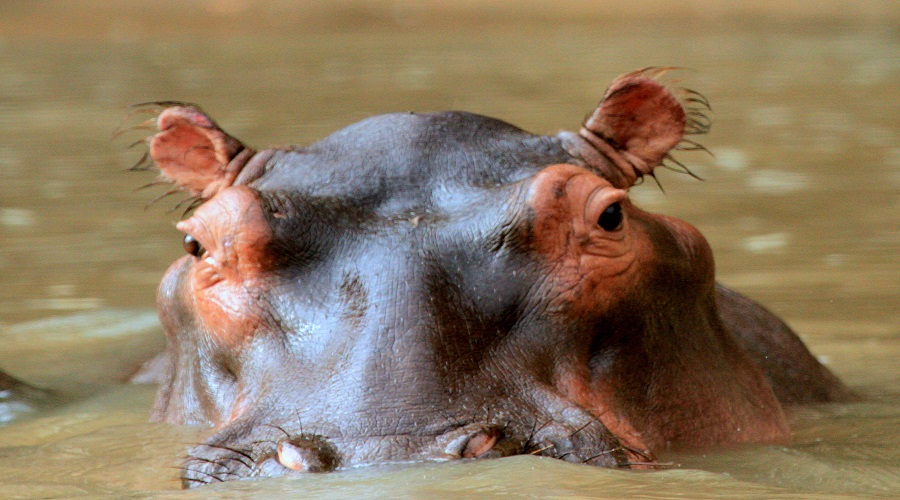Serengeti National Park is a living masterpiece of biodiversity, hosting one of the most spectacular wildlife populations on Earth. Covering nearly 14,750 square kilometers of golden grasslands, riverine forests, acacia-dotted plains, and granite kopjes, the park supports an estimated over 2 million large mammals — a density unmatched anywhere else in the world. From the thunder of the Great Migration to the silent stalk of a leopard in the shadows, every moment in Serengeti is alive with drama, survival, and natural wonder.
Declared a UNESCO World Heritage Site in 1981, the Serengeti ecosystem spans into Kenya’s Maasai Mara and supports over 4 million animals in total. Its name, derived from the Maasai word "Siringet" meaning “endless plains,” perfectly captures its vast, unbroken horizon where life unfolds in raw, unfiltered form.

The Serengeti is one of the few places on Earth where you can reliably spot all Big Five animals in their natural habitat — often within a single game drive. These iconic species were originally named by hunters for being the most dangerous to pursue on foot. Today, they represent the pinnacle of safari viewing.
Population: Over 3,000 — the largest in Africa.
Best Seen: Central Serengeti (Seronera), Moru Kopjes.
Behavior: Prides of 15–40 members dominate territories. Males patrol at dawn/dusk; females hunt cooperatively, targeting buffalo and wildebeest.
Population: ~1,000 (estimated).
Best Seen: Riverine forests along Seronera River, sausage trees.
Behavior: Solitary, nocturnal. Drags kills into trees to avoid hyenas. Cubs hidden in dense bush for 6–8 weeks.
Population: ~3,000 in Serengeti ecosystem.
Best Seen: Northern Serengeti, Western Corridor near Grumeti River.
Behavior: Matriarchal herds of 10–50. Bull elephants in musth (hormonal surge) are aggressive. Drink 160 liters of water daily.
Population: ~60,000.
Best Seen: Open grasslands, especially during dry season near waterholes.
Behavior: Herds up to 1,000 strong. Old bulls form “dagga boys” — mud-covered loners feared for charging without warning.
Population: ~30–35 (critically endangered).
Best Seen: Southern Serengeti, Moru Kopjes.
Behavior: Solitary, territorial. Feed on shrubs at dawn/dusk. Conservation efforts by TANAPA have stabilized numbers since 2015.
Every year, over 1.5 million wildebeest, 300,000 zebras, and 400,000 Thomson’s gazelles undertake the Great Wildebeest Migration — a 1,000 km circular journey driven by rainfall and fresh grazing. This is the largest overland migration on the planet and a UNESCO-recognized natural wonder.

Wildebeest braving crocodile-filled waters — a defining moment of the Great Migration.
Explore the Great Migration in Detail
The Serengeti supports Africa’s highest predator density. A complex food web ensures ecological balance, with each species playing a vital role.
Population: ~200–250.
Best Seen: Open plains of Southern Serengeti, Eastern Serengeti.
Behavior: World’s fastest land animal (0–100 km/h in 3 seconds). Hunts gazelles in daylight. Mothers raise cubs alone; 90% mortality rate.
Population: Over 7,500 — largest clans in Africa.
Best Seen: Night drives in Central Serengeti.
Behavior: Matriarchal clans of 80+ members. Scavenge and hunt. Bone-crushing jaws exert 1,100 psi.
Population: ~30–40 (endangered).
Best Seen: Lobo area.
Behavior: 80% hunt success rate. Cooperative packs of 6–20. Pups fed by entire pack.
Population: Thousands in Grumeti and Mara Rivers.
Best Seen: During river crossings.
Behavior: Ambush predators. Up to 6 meters long. Claim 200–300 wildebeest per season.
With over 540 recorded bird species, Serengeti is a paradise for birdwatchers. It hosts 34 species of raptors and 6 species of vultures alone.

The iconic lilac-breasted roller — a favorite among bird photographers.
Beyond the famous, Serengeti teems with unique and lesser-known species:
Tallest land animal. Jagged, star-like patches. Browse acacia treetops at 5.5 meters.
Pods of 30+ in Retima Hippo Pool. Spend 16 hours/day submerged. Territorial males weigh 3 tons.
300,000 migrate with wildebeest. Stripes unique like fingerprints. Foals stand within 15 minutes of birth.
“Tommy” — fastest small antelope. Stotting (jumping) confuses predators. Herds of thousands.
Elusive cats of tall grass. Serval’s 50cm ears detect rodents underground.
Kopje dwellers. Hyrax related to elephants despite rabbit size.
Discover All Regions of Serengeti
See All Things to Do in Serengeti
Whether you're chasing the Great Migration or dreaming of a lion at dawn, we’ll craft your perfect Serengeti adventure.